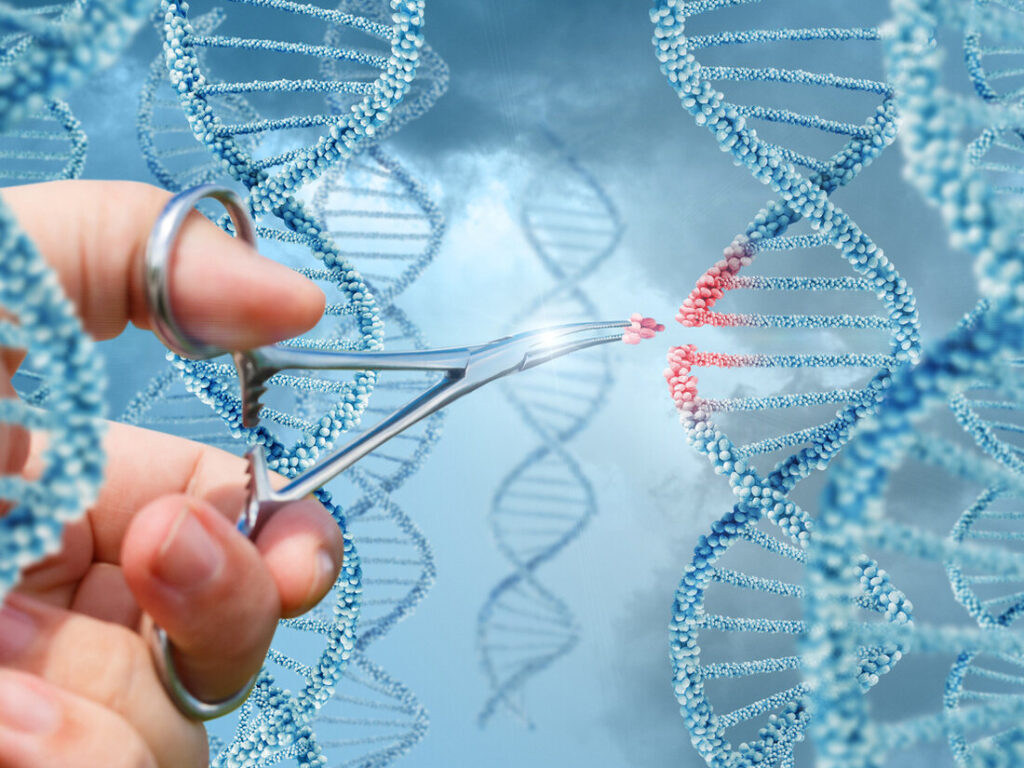Food & Climate
The Science and Innovation Forum (SIF 2024) opened its sessions yesterday, by discussing the benefits of adopting and diffusion gene editing technologies, studying their effects, and the way to developing food products that resist diseases and extreme weather conditions, such as drought-tolerant grapevines and hypoallergenic milk.
The Forum (SIF 2024), which one of the three pillars of the World Food Forum 2024, together with the Global Youth Forum and the Investment Forum, wrapped up three days of discussions on Friday at the Rome headquarters of the Food and Agriculture Organization of the United Nations (FAO) on how to make cutting-edge technologies available to small-scale producers, according to a statement that “Food & Climate” received today.
Genome editing (also called gene editing) is a group of technologies that give scientists the ability to change an organism’s DNA.
Genome editing technologies allow genetic material to be added, removed, or altered at particular locations in the genome.
Several approaches to genome editing have been developed. A well-known one is called CRISPR-Cas9, which is short for clustered regularly interspaced short palindromic repeats and CRISPR-associated protein 9. The CRISPR-Cas9 system has generated a lot of excitement in the scientific community because it is faster, cheaper, more accurate, and more efficient than other genome editing methods, according to ” U.S National library of medicine“.
Gene editing technologies
The third edition of SIF was held under the theme Inclusive Science and Innovation for Agrifood Systems Transformation, Leaving No One Behind. It brought together recognised scientists, innovation experts, and policymakers, as well as small-scale producers, Indigenous Peoples, women, youth, and the private sector, in a bid to encourage a diversity of perspectives based on science.
“Science, technology, and innovation are key accelerators of agrifood systems transformation, but they must be inclusive to ensure that the transition is just and equitable,” FAO Director-General QU Dongyu said in his opening address to the forum.

As the world’s agrifood systems face growing challenges—including the climate crisis, biodiversity loss, resource degradation, population growth, and changing
Diets—the potential of new technologies should be harnessed for developing solutions.
However, what is needed is to make these innovations impactful on a broader scale – so that all share the benefits equally and sustainably.
Research shows that gene editing technology could enhance precision in breeding methods and contribute to the rapid development of improved plant varieties and animal breeds.
Potential benefits include crops and livestock that are more resistant to pests and diseases and improved resilience to climate change.
Some of the gene-edited products being developed around the world include bananas biofortified with vitamin A, hypoallergenic milk, gluten-free wheat, disease-resistance salmon, drought-tolerant grapevines, and cacao protected against fungal disease.
However, there are also potential environmental, food safety, ethical, and regulatory concerns. In this regard, FAO published a report in 2022 that discusses these important aspects, followed by a 2023 report on food-safety-related issues in applying gene editing for food production, including the applicability of existing Codex Alimentarius principles and guidelines for relevant food safety assessments.
Above all, there’s a need to ensure that gene editing technologies are inclusive and benefit all food producers, including family farmers, Qu said in his opening remarks to the session.
The Director-General also called for more science communication and education to better inform the public about the potential benefits of these new technologies.
Artificial Intelligence
The need for inclusivity was also at the heart of an afternoon session on artificial intelligence (AI), which brought together diverse perspectives and allowed participants to explore how this technology can shape the future of agrifood systems.
AI is already reshaping how we grow, harvest, and distribute food, fisheries, and forestry. However, AI must be inclusive and responsible for its true potential to be realised. This is why, in February 2020, FAO, along with Microsoft, IBM, and the Holy See, was among the first signatories of the Rome Call for AI Ethics.
For AI to help reduce poverty and contribute to a world without hunger, it must bridge—rather than widen—what the Director-General calls the triple divide: digital, rural, and gender. This requires proper governance and collaboration between the public and private sectors.
FAO has already embedded AI and machine-learning techniques in many of its products.

These include the WaPOR portal, which monitors and reports on agriculture water productivity over Africa and the Near East; the Agricultural Stress Index System, which searches satellite data for emerging signs of drought; the SEPAL system, which tracks small-scale changes in forests that can indicate fires or illegal logging; the Fall Armyworm app, which enables farmers to detect Fall Armyworm damage in a timely manner; and FAO’s Data Lab, which uses non-conventional sources and builds AI-driven tools to modernise statistical processes to support agrifood systems transformation.

